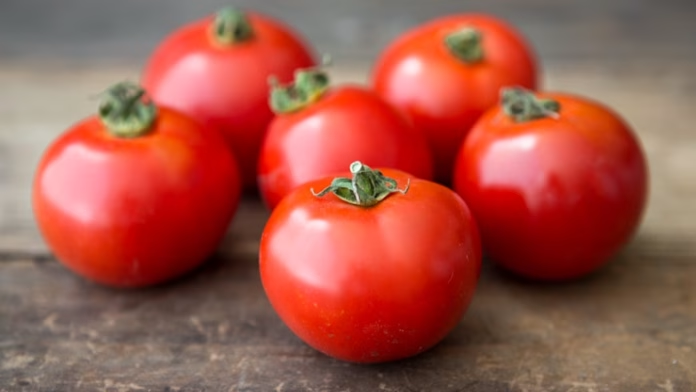If you’re already concerned about the elevated tomato costs in Delhi and the NCR region, brace yourself for further unfortunate tidings. According to a report by ToI, the retail cost of tomatoes is projected to surge past INR 200 per kilogram, reaching an unprecedented peak. This surge is attributed to an ongoing scarcity in states responsible for tomato production.
As per information from vegetable wholesalers in Delhi, a batch of 25 kilograms of tomatoes was auctioned at INR 4,100 in Uttarakhand on Monday. Considering the commission of mandi authorities, transportation expenses to Delhi, and added profit margins, it is anticipated that the wholesale price in Delhi’s mandis will surpass INR 5,000 per crate.
Vegetable wholesale trader Sardar Tony Singh, operating within Keshopur Mandi, reported procuring crates of tomatoes at a price of INR 4,100 each, originating from the Dehradun district of Uttarakhand.
“The prices this year have broken all previous records. Tomato in this season is generally auctioned for INR 1,200-1,400 for 25 kilos. I have not seen such high prices in my entire life,” he said.
Since June, there has been a notable rise in tomato prices, mainly due to decreased production and crop losses resulting from heavy rains in certain states. Presently, tomatoes are being sold at INR 150-180 per kilo in the retail market. In reaction to this situation, numerous fast-food chains have decided to eliminate tomatoes from their products, while restaurants have temporarily removed tomato soup from their menus.
In order to ease the financial strain on consumers, the central government has provided subsidies on tomatoes and launched sales at approximately 500 outlets, offering them at an initial price of INR 90 per kilo, which was subsequently lowered to INR 80.
Read More: Central government takes action to address soaring tomato prices, plans procurement from key states
Anil Malhotra, serving as the general secretary of the Vegetable Traders’ Association, indicated that Delhi sources its tomato supply from Uttarakhand, Haryana, Karnataka, and Maharashtra. He highlighted that there was an abundant tomato harvest in both 2020 and 2021, prompting farmers to dispose of their yield due to elevated transportation expenses in relation to the market prices. As a result, farmers in diverse regions, such as Himachal Pradesh and Uttarakhand, opted to curtail tomato cultivation this year in favor of growing various varieties of flowers.
Owing to diminished output coupled with sustained consumer demand, tomato prices have experienced a substantial increase.
The influx of tomatoes at Azadpur Mandi has declined from approximately 500 tonnes per day to a range of 350-400 tonnes during July. On Monday, the market received a meager 137 tonnes of tomatoes from a collective supply of Himachal Pradesh, Uttarakhand, Karnataka, and Maharashtra.
Traders foretold that the prices were poised to remain elevated throughout the month, with a potential easing anticipated only during the initial week of September, coinciding with an anticipated increase in supply from Maharashtra.





